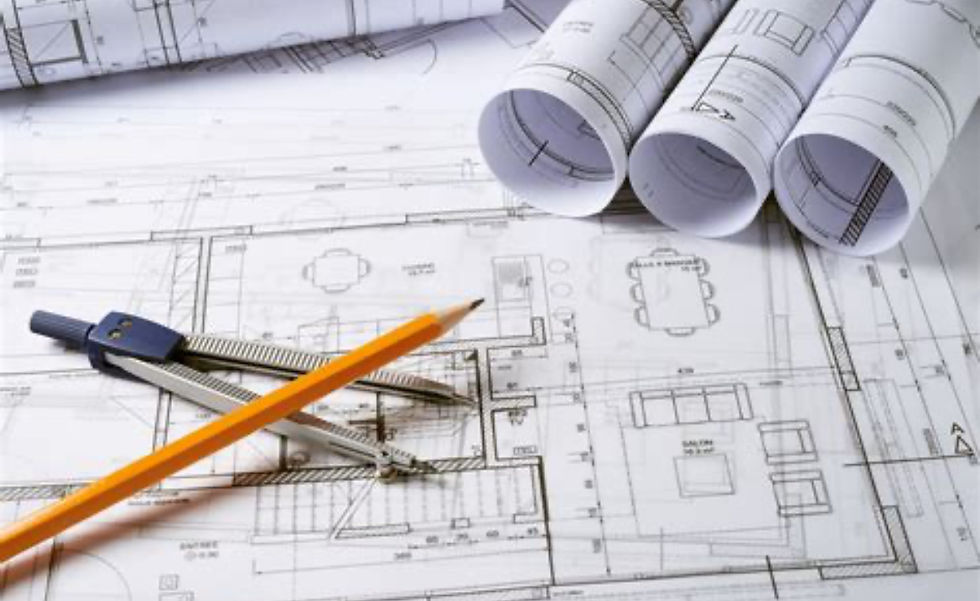Common Construction Mistakes and How to Avoid Them
- Claire Hunter
- Jan 7
- 3 min read

In the construction industry, even the smallest mistake can lead to significant delays, cost overruns, or safety issues. Understanding common construction errors and how to avoid them is essential for ensuring the success of any project. This article highlights the most frequent mistakes made in construction projects and provides actionable tips to prevent them.
1. Poor Planning and Scheduling
A lack of detailed planning is one of the most common causes of project delays and budget overruns.
Mistake:
• Failing to account for all project phases, task dependencies, and potential risks.
• Unrealistic timelines and underestimating the required resources.
How to Avoid:
• Develop a comprehensive project plan with input from all stakeholders.
• Use tools like Gantt charts or project management software to track progress.
• Include contingency plans and buffer time for unexpected delays.
2. Inadequate Budgeting
Insufficient budget planning often results in unexpected costs and financial strain.
Mistake:
• Overlooking hidden costs, such as permits, inspections, or material price fluctuations.
• Underestimating labor costs or subcontractor fees.
How to Avoid:
• Conduct a thorough cost analysis during the planning stage.
• Include a contingency fund (typically 10-20% of the budget) for unforeseen expenses.
• Regularly review financial reports and adjust budgets as needed.
3. Ignoring Building Codes and Regulations
Failure to comply with local building codes can lead to project shutdowns or costly legal issues.
Mistake:
• Not researching zoning laws or obtaining necessary permits.
• Using materials or designs that don’t meet code requirements.
How to Avoid:
• Consult with experts or hire a code compliance officer.
• Regularly update your team on changing regulations.
• Conduct inspections at key stages to ensure compliance.
4. Poor Communication
Miscommunication between stakeholders can lead to errors, rework, and delays.
Mistake:
• Lack of clarity in project goals, task assignments, or timelines.
• Failure to document changes or updates to the project scope.
How to Avoid:
• Use project management tools to centralize communication.
• Hold regular team meetings and update all stakeholders on progress.
• Document and share all changes to the project plan.
5. Using Low-Quality Materials
Choosing subpar materials to save costs can compromise the project’s durability and safety.
Mistake:
• Opting for cheaper materials without considering their long-term impact.
• Failing to inspect materials for defects or quality.
How to Avoid:
• Work with reputable suppliers and prioritize quality over cost.
• Perform quality checks on all materials before use.
• Factor material longevity into your budget planning.
6. Skipping Safety Protocols
Neglecting safety measures can result in accidents, injuries, and even fatalities.
Mistake:
• Not providing proper training or personal protective equipment (PPE).
• Ignoring site inspections or safety audits.
How to Avoid:
• Develop a comprehensive safety plan and enforce it rigorously.
• Train workers on safety protocols and provide necessary PPE.
• Conduct regular site inspections to identify and mitigate hazards.
7. Overlooking Environmental Impact
Ignoring environmental considerations can lead to regulatory penalties and harm the project’s reputation.
Mistake:
• Failing to manage construction waste properly.
• Not considering sustainable practices or energy efficiency.
How to Avoid:
• Implement sustainable building practices, such as using eco-friendly materials.
• Develop a waste management plan to reduce landfill contributions.
• Design buildings with energy efficiency and environmental impact in mind.

8. Inaccurate Measurements
Small errors in measurements can lead to structural problems or rework.
Mistake:
• Miscalculating dimensions, leading to improper fit or alignment.
• Overlooking site surveys or terrain assessments.
How to Avoid:
• Double-check all measurements and use accurate tools.
• Conduct thorough site surveys and involve experienced professionals.
• Review plans and blueprints meticulously before construction begins.
9. Hiring the Wrong Team
A lack of experienced or skilled workers can lead to poor-quality work and delays.
Mistake:
• Hiring contractors or subcontractors without proper vetting.
• Failing to provide clear expectations or oversight.
How to Avoid:
• Vet all contractors and workers for qualifications and experience.
• Clearly define roles, responsibilities, and deliverables in contracts.
• Maintain strong oversight and provide feedback regularly.
10. Neglecting Post-Construction Inspections
Rushing to complete a project without thorough final inspections can result in hidden issues later.
Mistake:
• Overlooking small defects or incomplete work during the handover phase.
• Failing to test systems like plumbing, HVAC, or electrical thoroughly.
How to Avoid:
• Conduct a detailed final walkthrough with a checklist.
• Hire third-party inspectors to ensure all work meets standards.
• Address any punch list items before project completion.
Conclusion
Avoiding common construction mistakes requires meticulous planning, effective communication, and a commitment to quality and safety. By learning from these common pitfalls and implementing proactive measures, project managers can ensure their projects are completed on time, within budget, and to the highest standards.
Are you facing challenges in your construction project? Share your experiences or tips in the comments below!




Comments